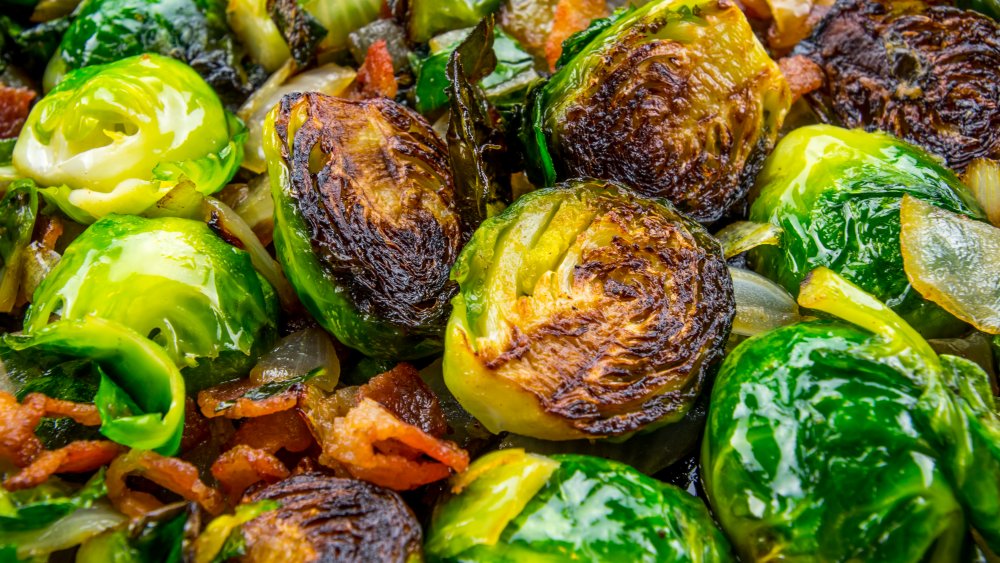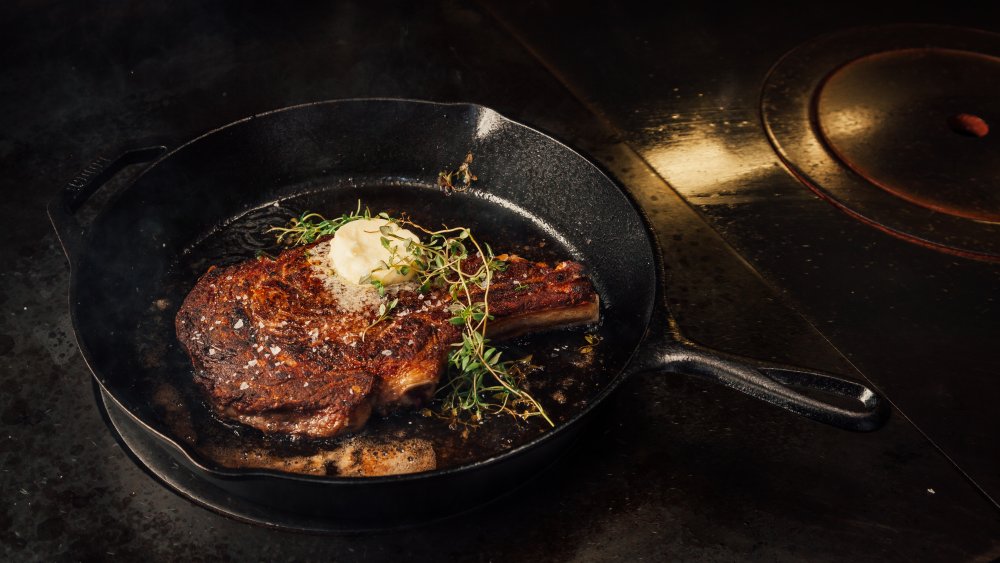What You Should Know About The Maillard Reaction
Toasty, seared, charred, and golden-brown — you can thank the Maillard reaction, named for the French chemist who discovered the process, for every last one of these characteristics (via The Spruce Eats). When it comes down to it, Serious Eats explains that cooking is just science on a stove, and this complex chemical reaction is what gives toast its nutty crunch, both steak and bread their crusts, and even coffee the deep flavor that has you hooked (well, that, and the caffeine). But what are the most important things to know about the Maillard reaction when you cook?
For one, the Maillard reaction actually breaks certain chemical bonds in foods at high temperatures — 310 degrees Fahrenheit or higher — and rearranges them to make completely new flavors, which is why, for example, the taste of roasted cauliflower is so different than cauliflower that is boiled and steamed. Proteins are broken down by heat in a way that changes the color, smell, and taste of a food, and then those components are further broken down, creating new flavors, and so on in a complex chain reaction (Serious Eats and The Spruce Eats). Boiling water can't get this hot, unfortunately — so if we want crispy chicken skin or char on some roasted veggies, we opt for dry cooking like the stove or oven rather than a pot of water, reports The Spruce Eats.
Maillard's practical purpose and second cousin, caramelization
The Maillard reaction isn't just there for your pleasure — it also serves a practical purpose. Because there are many raw foods humans don't eat, the reaction gives humans the signal that food is ready to eat, and that our bodies can effectively extract nutrients from it (via Serious Eats). For example, it's possible to eat raw potatoes — but in a cooked potato, starches break down into simple sugars that are much easier for the body to digest (via Serious Eats). The smell of home fries, their light brown color, and the appealing taste all tip us off: it's time to eat this thing. Of course, we often eat mashed potatoes that haven't been browned, but when we mix in butter or other flavorings, we are actually adding primary aromatic and flavor compounds that are produced in — where else? — the Maillard reaction (via Serious Eats).
Note: the Maillard reaction is similar to caramelization, but they're not the same thing. According to both Serious Eats and The Spruce Eats, caramelization happens when sugars break down and form new chemical compounds, but both scientific processes can happen to varying degrees in any given food, with similar effects. For example, a chocolate chip cookie browned in the oven might be experiencing more caramelization because of its high sugar, and only a little bit of Maillard — for a pork chop, high in protein, it's the other way around (via the Spruce Eats).

